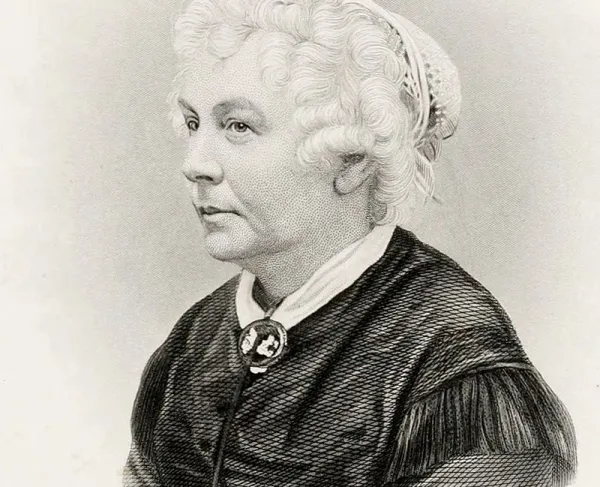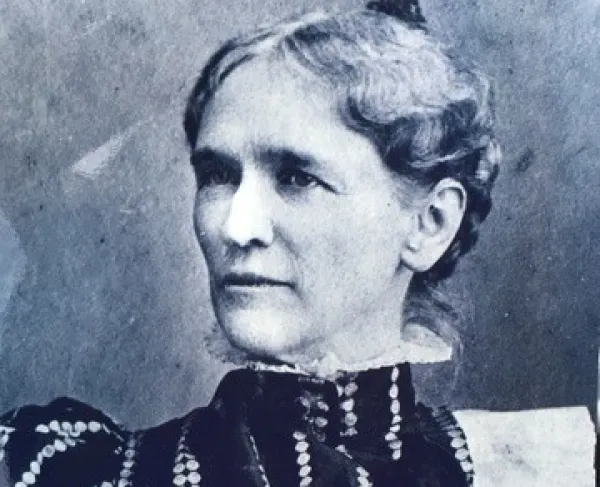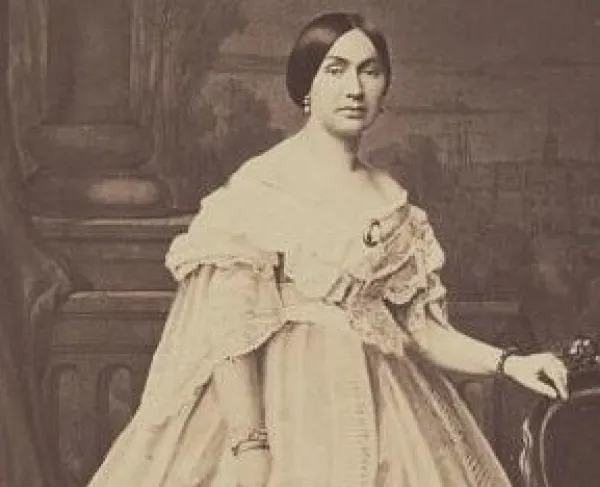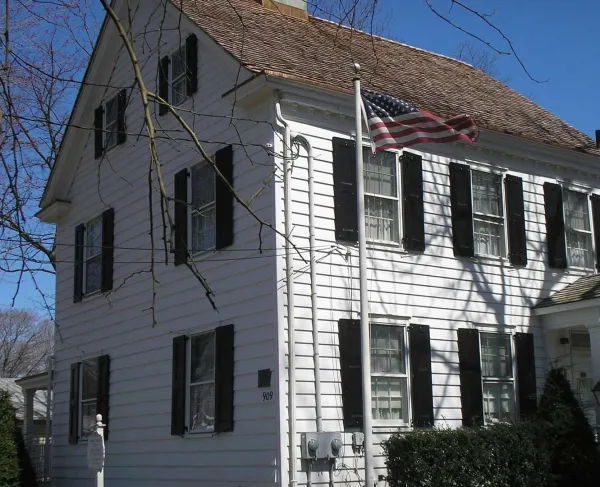Elizabeth Cady Stanton

During the American Civil War, the Woman’s Loyal League comprised of women from Northern states reflected their hopes for women’s suffrage and their commitment to the Union cause in these selected resolutions:
“Resolved, There never can be a true peace in this Republic, until the civil and political rights of all citizens are established.
“Resolved, That the women of the Revolution were not wanting in heroism and self-sacrifice, and we, their daughters, are ready, in this War, to pledge our time, our means, our talents, and our lives, if need be, to secure the finale and complete consecration of America to freedom.”
It was another chapter in the debate and struggle for women’s voting rights in the United States and another chapter in the life of Elizabeth Cady Stanton.
Born on November 12, 1812, she grew up in New York state, where her father owned land and served as justice of the state supreme court. She attended Johnstown Academy, becoming a talented debater and winning a prize for her studies in Greek. Elizabeth Cady read her father’s law books and wanted to go to college, only to discover that young women were not accepted at colleges or universities. Eventually, she finished her formal education at Troy Female Seminary.
Through her friendship with her cousin Gerrit Smith, a committed abolitionist, she met Henry Brewster Stanton and married him in 1840, refusing to use the word “obey” in her wedding vows and believing that marriage was an equal relationship. Elizabeth Cady Stanton chose to use her husband’s last name, though she signed her own name in correspondence and publishing—instead of the more traditional form of that era, Mrs. Henry B. Stanton. During her honeymoon trip to Europe, Stanton attended the World Anti-Slavery Convention in London in 1840, and she met Lucretia Mott, a Quaker preacher and early American advocate for women’s rights. Back in the United States, the Henry and Elizabeth Stanton moved to Boston, Massachusetts, where she thrived in her new circle of intellectual and philosophical friends. She missed her new friends when the family moved to Seneca Falls, New York in 1847. Stanton had seven children, raising them mostly on her own and overseeing their education while her husband’s political traveling work kept him away from home much of the year.
In 1848 after another meeting with Lucretia Mott, the idea was born: to organize a women’s rights convention in Seneca Falls. Approximately 300 women and men attended the Seneca Falls Convention on July 19-20, 1848, and discussed the Declaration of Rights and Sentiments. Stanton authored most of the declaration, modeling it after the Declaration of Independence and listing grievances, including the denial of women’s right to vote. Despite opposition from her husband extended family members, Stanton insisted that voting was an essential right; convention attendees had their doubts, though, until Frederick Douglass, a formerly enslaved man, abolitionist, and civil rights advocate, gave his support for women’s suffrage. The Seneca Falls Convention is recognized as the first convention to specifically discuss women’s rights and became a model for future conventions. Stanton’s insistence to include women’s suffrage in the convention brought the topic into national attention.
Over the next decades, local and national women’s rights conventions were regularly organized, and Stanton, Mott, and Susan B. Anthony became leading speakers or influencers at the events. However, unable to frequently leave her young children in the 1850s, Stanton networked with other women who were actively traveling and speaking about women’s rights. She supported Susan B. Anthony and often wrote speeches for her, providing a polish and rhetoric to the women’s movement which Anthony delivered with enthusiastic passion to large audiences across the country. Though she was not the speaking circuit during the 1850s, Stanton did make public speeches and advocated for a wide range of social reforms, including temperance, improvements for property laws for married women, dress reform, divorce laws reform, and the abolitionist movement.
In January 1861, Stanton joined Anthony and other speakers on a tour of abolitionist lectures in New York state. The tour began during the Secession Winter, and Stanton initially said to let the southern states go. In this case—like many other scenarios—Stanton changed her perspective as time and events unfolded. By 1863, the Union war effort included emancipation, and Stanton and Anthony organized the Women’s Loyal National League to advocate for a constitutional amendment to abolish slavery. This league was the first national women’s organization in the United States, and the league collected almost 400,000 signatures supporting abolition. Throughout the league’s campaign, Stanton frequently reminded the public that women could only petition, while men voted. The Thirteenth Amendment to the Constitution abolished slavery and was ratified in 1865.
Stanton was less supportive of the Fourteenth Amendment, displeased that it defined citizens only as “male.” In January 1866, Stanton and other women’s rights advocates started a petition to add a constitutional amendment for women’s suffrage. Many abolitionists opposed the concept of universal suffrage, and urged the women to campaign for voting and citizen rights for black men only through the Fourteenth Amendment. Stanton ignored the advice and went further, announcing her independent candidacy to run for a congressional seat in the October 1866 elections, but she only received 24 votes.
The Fifteenth Amendment to the U.S. Constitution, which prohibited the denial of suffrage because of race, split the women’s rights movement. Stanton opposed the amendment and wrote articles that used derogatory language, prompting Frederick Douglass to confront her. By 1869, Stanton formally called for a Sixteenth Amendment that would guarantee suffrage for women and used a female-operated newspaper, The Revolution, to publish her thoughts.
For much of the 1870s, Stanton traveled across the United States, lecturing through the Lyceum movement. She typically gave one lecture per day for eight months of the year. She spoke about women’s rights, education for girls, marriage and divorce, and women mentioned in the Bible. Stanton was financially successful through her lecturing, adding to her household’s income at the time when her children anticipated going to colleges in the United States and Europe. Politically, through Stanton and Anthony’s efforts, Senator Aaron A. Sargent brought forward a women’s suffrage amendment to Congress, but it would be more than forty years before the amendment passed (Nineteenth Amendment, 1919). While some suffragists tried to bridge the goal gap that had emerged—between a sole focus on suffrage or a broader focus on other social, female concerns—Stanton remained opposed to compromising societal reform simply to get the vote.
In 1880, Stanton tried to vote but was not allowed to add her ballot to the box. During the rest of the decade, Stanton traveled in Europe, giving speeches and sending reports to newspapers in the United States. She laid the groundwork for the International Council of Women which formed in 1888. Stanton’s husband, Henry, died in 1887. In 1890, Stanton became president of the National American Woman Suffrage Association at her friend Anthony’s insistence, but Stanton held the position for just two years and declined re-election. She spent her final years continuing to write and advocate for “educated suffrage.” Elizabeth Cady Stanton died on October 26, 1902, in New York City, and is interred in Woodlawn Cemetery in The Bronx.
In 1919, seventeen years after her death, Congress passed the Nineteenth Amendment to the U.S. Constitution—allowing women to vote. Stanton’s role in the Suffrage Movement is recognized and honored with statues, a national historic park, and organizations supporting suffrage and women’s rights are named in her honor.





